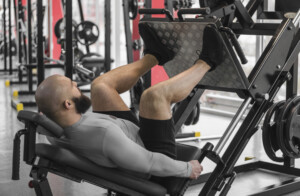
Watch even just a little sports on TV, and sooner or later you’ll hear something about an athlete’s groin injury.
Sports that commonly result in groin injuries: running (or sports that require a lot of running or stop-and-go actions, like soccer, lacrosse, football, tennis and hockey.
Groin injuries can also strike inline skaters, surfers and people working their legs at the gym.
“Groin injuries are extremely common and often difficult to manage at
times,” says Peter Vitanzo, Jr., MD, sports medicine specialist at the Rothman Institute at Thomas Jefferson University Hospital, in Philadelphia.
“They can be very disabling for an individual, particularly an athlete.”
Seems as though when a professional athlete gets stricken with a groin injury, it persists and keeps the athlete out of commission for months on end.
Dr. Vitanzo explains, “These types of injuries can be a diagnostic dilemma at times, which can lead to a delay in being evaluated by a specialist and, ultimately, treating appropriately.
“This is one of the reasons these injuries can become chronic and stubborn to manage.”
What is a groin injury?
Vincent Perez, PT, with Perez Physical Therapy in NY, explains that “Groin injuries is a term typically used to describe strains/tears of several muscles: adductors and hip flexors. Those muscles are usually any of the adductors or the iliopsoas, which is the hip flexor.”
Dr. Vitanzo adds that patients may experience pain in the front of the groin area (hip flexor strain or even an iliopsoas bursitis).
Another area of pain is “deep on the inside of the groin (classic adductor strain), or even in the midline in the front of the pelvis (osteitis pubis or ‘sports hernia’).”
But no matter where the problem is, these injuries can be a real impediment to the athlete or trainee.
The muscle-tearing can result in scar tissue, and this is often the cause of recurrence.
Runners with Groin Injuries
In a way, this is a whole special group when it comes to these injuries.
According to Dr. Vitanzo, “In my experience, patients who are runners tend to present much later in their course with chronic symptoms, as opposed to other athletes whom I have dealt with who tend to present right away.

“I think a lot of this has to do with the mentality and passion of the ‘true runner’ and their unwillingness to have to stop running in order to appropriately diagnose, treat and allow these types of injuries to heal.
“This can become a problem because the longer these injuries linger, the longer and much more difficult they are to treat and manage.”
If diagnosis—and therefore treatment—are delayed, then treatment will require more time than ever away from the offending activity. This can be very difficult for the committed runner.
“Many times patients wait until the symptoms get so bad that they just can’t perform their activity anymore to the level they want to compete at.”
Treating the Groin Injury
Dr. Vitanzo says that when diagnosed promptly, these injuries can be managed without incident and the athlete can return fairly quickly to sports activities.
But if there is a delay in diagnosis—for instance, the sufferer thinks he or she can work it out without intervention—then the injury can become plain stubborn.
Perez explains, “They take a while because of the stress the area receives during aggressive sports, and the athlete’s training/rehab usually does not involve enough rotational movements with sufficient speed and intensity. Scarring obviously adds to the time.”
Cross-training should be part of treatment protocol, to prevent deconditioning.
If the injury is acute, then the usual fare of ice and anti-inflammatories is called for.
In a chronic groin problem, inflammation isn’t a key player; rather, scar tissue is—and scar tissue is much harder to treat. But there’s hope.
Dr. Vitanzo explains, “One of the newer diagnostic/treatment options includes use of musculoskeletal ultrasound which I incorporate frequently in managing these patients.
“The beauty of this type of study compared with MRI is that it gives dynamic views of an injury as opposed to static views like an MRI.
“Therefore, you can actually stress the area of concern while performing the study and really localize the injury, even subtle injuries which a ‘static’ study may miss.
“I have also utilized ultrasound guidance to inject these recalcitrant injuries with very good results and quicker return to activity times.”
Risk Factors for Groin Injuries
Perez says that insufficient warm-up and poor flexibility are at fault, along with possibly weakness.
In fact, lack of flexibility can cause a groin pull or strain during a leg press motion.
If the trainee lowers the declined leg-press platform deeply, in combination with feet pointed outward (especially if feet are also far apart), then this will stress the adductor region.

Shutterstock/Motortion Films
This is a good exercise, but for people new at it, very light weights are mandatory. Otherwise, the trainee may exit the equipment almost immediately feeling something wrong with the groin area.
Any adductor routines that combine resistance with stretching can put a person at risk for groin injuries—unless the trainee is flexible and already conditioned.
To get conditioning, the routine must be initially done gently and with light weights, if any at all.
Furthermore, aggressive stretching—perhaps by eager and impatient martial artists in an attempt to increase “splits” (both kinds) flexibility—can also injure the groin area.
Another risk is when a person engages in a sport that involves a lot of rotation in the pelvic region.
Again, stiff muscles and/or inadequate warm-up will increase risk of groin strains or tears.
Groin injuries do not need to be permanent. Full groin/adductor capabilities can be restored if:
Trainee stops making excuses and heads straight for an orthopedic specialist or physical rehab expert.
Trainee accepts the reality that he or she may need to completely avoid the offending activity for a while.
Trainee devotes time to a structured stretching and cross-training regimen that’s designed to bring back strength, increase limberness and break down scar tissue.
There is no cookie-cutter prescription for groin injury rehabilitation routines.
Groin injuries occur to different sections of soft tissue, and thus, necessitate different treatment modalities for each individual case.
In order to determine specific exercise motions, the sufferer would need a complete evaluation by an orthopedic specialist, who would then most likely make a referral to a physical therapist.
The physical therapist would then perform an evaluation of the groin injury, based upon which a set of specific routines could be designed.
 Dr. Vitanzo passed away in 2020.
Dr. Vitanzo passed away in 2020.
 Vincent Perez has dedicated 25+ years as a licensed physical therapist to managing orthopedic and sports injuries. Perez has treated professional and amateur athletes in all sports including the New York Yankees.
Vincent Perez has dedicated 25+ years as a licensed physical therapist to managing orthopedic and sports injuries. Perez has treated professional and amateur athletes in all sports including the New York Yankees.
 Lorra Garrick is a former personal trainer certified through the American Council on Exercise. At Bally Total Fitness she trained women and men of all ages for fat loss, muscle building, fitness and improved health.
Lorra Garrick is a former personal trainer certified through the American Council on Exercise. At Bally Total Fitness she trained women and men of all ages for fat loss, muscle building, fitness and improved health.
.

























